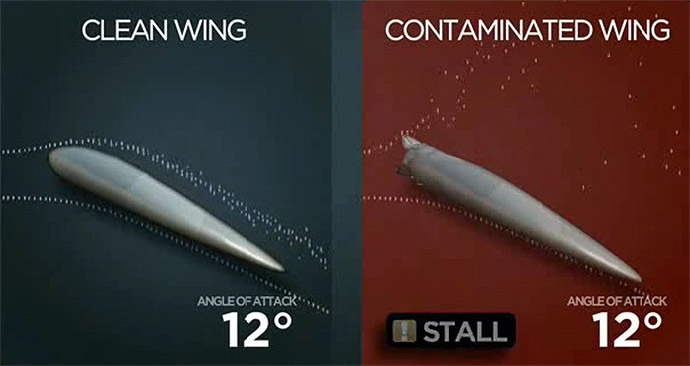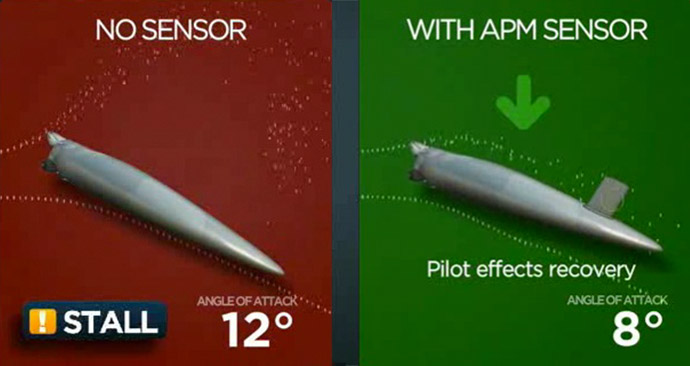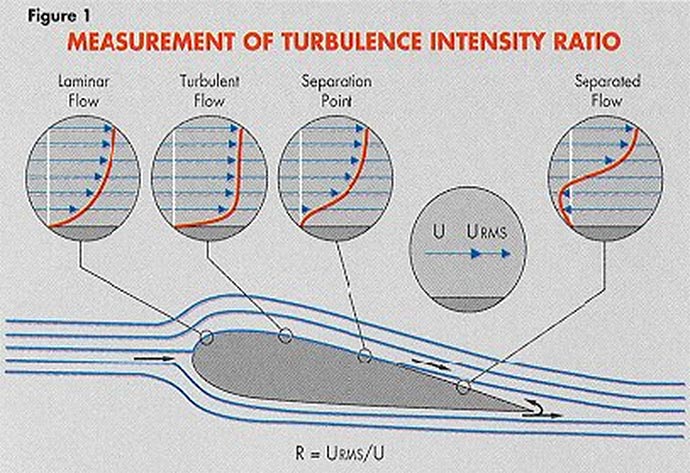Airfoil Performance Monitor (APM)
Optimum aircraft efficiency with built in real time stall avoidance
Shortcomings with existing Angle-Of-Attack (AOA) and ice detector technologies that are currently employed for aircraft continue to allow numerous aircraft accidents, particularly during or immediately after take-off, with iced or contaminated airfoils.
Marinvent’s Patented APM is an airflow monitoring technology that accurately assesses the “stress” on an airfoil at the airfoil surface itself by measuring the airflow turbulence intensity, which directly correlates to the airfoil’s proximity to stall. The APM system is the only system that measures the state of the airflow over any airfoil surface in all phases of flight and in all weather conditions. The APM tells the pilot or avionics systems the margin remaining to the stall for airfoils, even when they are iced, contaminated or degraded.
APM Key Features
- APM directly measures aerodynamic performance at the source
- The lifting surface of the airfoil (wing, tail, etc.)
- Measures airflow turbulence intensity (“R) resulting from boundary layer tripping / separation
- Provides aircrew, UAS operators and avionics systems with vital information that is currently not available to them
- Provides margin to stalls that occur for any reason
- Exceeding stall angle of attack
- Contamination at leading edge or lifting surface
- Mach buffet
- Shows location of stall so pilot can take the appropriate action to recover
- Allows critical decisions to be made fast that can significantly improve safety & survivability
- Allows the vehicle to be flown in most efficient manner at all times and under all contamination / weather conditions
- By “flying R”
- Allows for optimization of use of anti-ice and de-icing systems
- Use only when actually necessary
- Allows for approach speeds to be optimized for actual real-time conditions to reduce brake wear

Contaminated wing stalls at lower AoA than a clean wing.

APM allows pilot to see impending stall and effect recovery.
APM Safety Benefits
- Existing stall warning and ice detection systems provide little or no advanced warning of impending stall conditions and little useful information about the actual contamination conditions at the airfoil surfaces
- Crew has little time to react appropriately and little useful information to base their decision upon (causing accidents)
- APM provides real-time data that provides pilots/avionics systems & UAS operators much more
- Time to make appropriate decisions
- Information to use to make the best decisions
- Safety & survivability
- It has the potential to almost eliminate these accidents by providing significantly earlier warning
APM Green Benefits
- Current civilian and military aircraft (and UAS) have no means to measure aerodynamic performance at wings or stabilizers (stress on the airfoil)
- APM provides real-time data that allows pilots/avionics systems to optimize the fuel spend based upon current, actual, airfoil conditions
- Less fuel used – better carbon footprint
- Less brake wear as a result of optimized landing speeds
- Lower cost of operations
- Provision of operational data that can help to determine optimal maintenance (cleaning, painting, etc.,) based on ROI
- Since use of de-icing fluids significantly lowers airfoil efficiency, being able to only use such fluids when critical provides for huge cost and efficiency savings
- APM is the only system that can accurately and effectively provide the necessary feedback to enable this optimization

Application Spaces
- Green aircraft operation/efficiency in all weather conditions and phases of flight
- Aircraft safety under icing, wing contamination and wing degradation conditions
- Protection for airframe manufacturers against claims resulting from airframe loss or damage due icing conditions
- Aircraft safety during take-off roll and high speed stall conditions
- Prevention of Unmanned Air Vehicle loss due to icing/contamination
- Extension of UAS range and payload in cold climates

